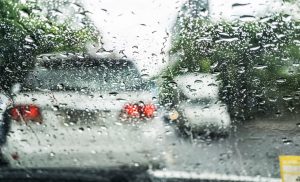The National Highway Traffic Safety Administration (NHTSA) reported that 66 percent of traffic fatalities were caused by aggressive driving. Aggressive driving refers to a variety of offenses, including passing when prohibited, erratic lane changing, and tailgating (following too closely).
Though speeding continues to top the list of aggressive driving behaviors, following improperly remains an important – albeit, less talked about – issue for Connecticut drivers.
If you or a loved one has been involved in a car accident, The Flood Law Firm offers our sincerest concern. From mild fender benders to severe injuries, there’s nothing easy or convenient about being in a car wreck. However, you may be entitled to compensation to make up for vehicle damage, medical bills, or lost wages you have suffered as a result.
Our professional and experienced attorneys offer a no-cost, zero-obligation consultation to help you understand your best options. Find out more today by calling (860) 346-2695. To learn more about car crash statistics, visit this page.
Common Types of Tailgating Accidents

Following a vehicle too closely often results in a rear-end collision. Research conducted by the NHTSA has revealed that rear-end collisions account for 28 percent of all wrecks, meaning they’re one of the most recurring types of accidents in the United States.
“Driving too closely behind another vehicle,” otherwise known as tailgating or “riding someone’s tail” decreases a person’s reaction time. For example, if the car in front abruptly slams on his or her brakes, then the vehicle driving too closely behind, or tailgating, will most likely be unable to avoid smashing into it. In some cases, frustrated motorists will even “brake check” the vehicle behind them, hitting their brakes on purpose and not only causing a collision but creating an anger-fueled situation.
In fact, road rage is regularly associated with tailgating crashes. Arguably so, drivers who get behind the wheel angry can be just as dangerous as those who are either drunk or on drugs. Tailgating can also stem from stress as well as being in a hurry.
Weather conditions can also cause a tailgating accident. Rain, snow, ice, sleet, or dense fog can all make it more difficult for drivers to see clearly and increase stop time. Thus, to avoid a potential impact, it’s imperative to keep a safe distance between your vehicle and the one in front of you. Doing so will also help to ensure that you evade all injuries connected with tailgating crashes.
Tailgating Accident Injuries
As with any type of car accident, injuries can range from cuts and bruises to broken bones and more permanent damages. In tailgating crashes, the most serious injuries can include:
- Traumatic Brain Injuries (TBI)
- Internal Organ Damage
- Spinal Cord Injuries
- Neck Injuries
- Fractures
- Death
The exact nature of the injuries will be determined by how fast and hard the two vehicles hit. However, one injury that commonly results following a tailgating accident is whiplash. Named for its jerking or “whipping” motion of the head and neck, whiplash is a soft-tissue impairment that carries with it long-term effects like headaches, back pain, and overall stiffness.
If you’ve experienced any of these issues following a wreck, you should seek medical attention immediately. Then, contact The Flood Law Firm to learn more about your legal options.
Tips for Preventing Tailgating
According to Teen Driver Source, car accidents are preventable – for drivers of all ages, and wrecks of all categories, including tailgating crashes. The next time you get into the driver’s seat, consider the following tips to help avoid a collision:
Don’t Speed
Observing the speed limit is not only the law, it is also in your best interest. Since tailgating is often associated with speeding drivers, you can do your part by driving a safe speed always. If you are on a two-lane highway and you are being tailgated, move over to allow the vehicle to pass you if it is safe and possible.
Leave Space
Always leave an adequate amount of space between your vehicle and the vehicle in front of you. While there is no set rule or law, a good measure to practice is to keep 10 feet of distance for every increment of 10 miles per hour you are driving. However, if the car in front of you is larger (i.e. truck, trailer, etc.), a greater distance is more appropriate.
Be Mindful of Weather 
As mentioned, weather conditions can affect roads. Specifically, the wet pavement decreases the traction of your car’s tires, which can lead to slipping and sliding. To avoid smashing into the car in front of you, a great rule of thumb is to double the space between yourself and the car ahead of you.
The Timing Rule
While keeping a safe distance between your car and the car you’re following is important, there are times when judging that distance can sometimes be tough. A tactic known as the “timing rule” can help you keep a cushion of space between your car and the car in front of you. This timing rule consists of three different segments:
Two-Second Rule
This first part of the rule is for when roads are dry and clear. You should be at least two seconds behind the car in front of you. For example, when the vehicle in front of you passes through a traffic light, two seconds should pass before you clear the same traffic light.
Four-Second Rule
This rule takes poor road conditions into consideration. When pavements are slick with rain or obscured by fog, you should be four seconds behind the automobile in front of you.
Ten-Second Rule
When roadways are tainted with snow or ice, it’s best to give yourself even more time to react. While it may seem excessive, a ten-second delay can offer you the time you need to avoid an accident.
The timing rule is helpful, but your personal judgment matters, too. When on the road, always make sure your actions allow you to feel safe and comfortable. Only you know what’s best for you.
Contacting an Auto Accident Attorney
Have you or someone you love recently been involved in a tailgating accident? If so, The Flood Law Firm wants to hear from you. With years of combined experience, we’ve got the skills and knowledge to assist you during this trying time. From making phone calls to collecting medical records, we will handle all aspects of your case. You will have the time you need to focus on recovering from your injuries.
Contact our professional attorneys today by calling (860) 346-2695. We offer a no-cost, no-obligation consultation to better assess your needs, and help you understand how to best move forward. You have nothing to lose.
